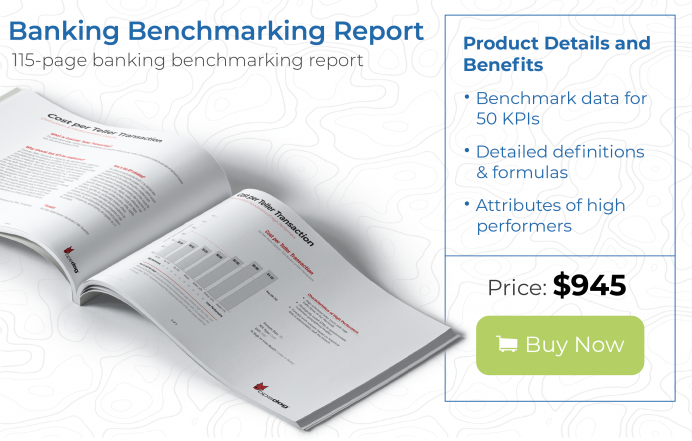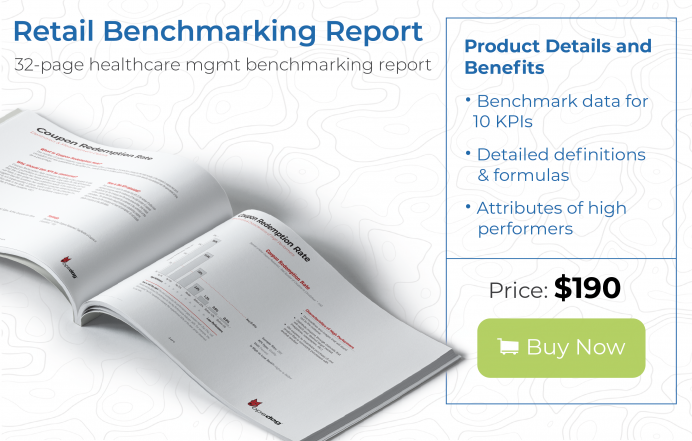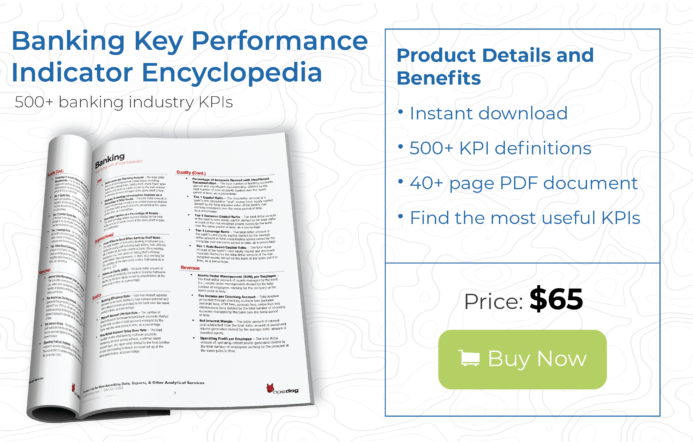Fintechs moving into traditional banking territory, increased scrutiny from regulators, and new customer dynamics are changing the retail banking business model. Banks are having to spend more to keep up—but a low-interest rate environment makes staying profitable more difficult.
To compete, you’ll need to refine your retail banking strategy, reduce costs, and be smarter about allocating your resources. To accomplish these tasks, you’ll need the aid of retail banking Key Performance Indicators or KPIs.
What is a Retail Banking KPI?
Retail Banking Key Performance Indicators (KPIs) are metrics you can use to measure your retail banking baseline—where you are starting from—and then inform your decision-making going forward. For example, if you discover that you have a higher employee attrition rate compared to your peers, you can quantify the impact of any changes you make to try to reduce turnover. Did creating a career path encourage more good employees to stay? How important is it to update your recruiting and pre-hiring assessments? Did management training actually improve employee retention?
Retail banking KPIs can give you the insights you need to make better, smarter decisions about everything from digital banking strategy, to how you staff your branches, to how you recruit and train employees, to rethinking your branch footprint.
How Retail Banking KPIs can Boost Retail Bank Performance
One of the biggest challenges retail banks face is digital transformation. Customers are used to self-service and 24/7 access from Amazon, Netflix, and a slew of other industry disrupters, and those expectations have made their way to retail banking. Retail banks have had to invest heavily in digital channels as well as digital marketing.
Digital can be expensive—and the ROI can be difficult to measure. Retail banks know they have to keep up with competitors to survive but need to be judicious in how they spend their digital budgets.
Retail Banking KPIs can be directly connected to digital performance. For instance, you can measure the effectiveness of your digital marketing strategy, allowing you to set clear goals, monitor whether or not you meet those goals, and then tweak the strategy to choose the advertising platforms that will most effectively help you achieve your campaign goals.
Retail Banking Key Performance Indicator Examples:
Whether you want to measure teller productivity, employee satisfaction with digital banking products, or whether you need to invest in enhanced security for retail branches, there are retail banking KPIs that will help. Here’s five often-used retail banking KPIs to get you started.
Retail Banking KPI Metric #1: Turnover Rate First Year of Employment
Employee turnover cost ranges somewhere between 60% and 136% of an employee’s annual salary. A high turnover rate is not only a big drain on profits, but it impacts customer service, work quality, and employee morale as well. Although you should expect some turnover, a high turnover rate could indicate ineffective recruiting, poor management, lack of employee training, or a negative work culture.
To calculate, divide the number of employees who voluntarily or involuntarily leave during their first year of employment by the total number of employees you hire for the year, as a percentage. Don’t include temporary or contract workers or employees who move between positions.
Retail Banking KPI Metric #2: Digital Marketing (Launch-to-Analytics) Cycle Time
In an increasingly competitive retail banking environment, it’s critical to have a strong digital marketing strategy that includes social media, paid search platforms, and display ads. But if you have a long lag time between launching a campaign and then measuring the results of that campaign, you won’t be as nimble and responsive as your peers. You need to launch campaigns quickly and make adjustments and incremental improvements fast.
To calculate digital marketing cycle time, divide the number of calendar days to initiate and complete a digital marketing campaign by the total number of digital campaigns done.
Retail Banking KPI Metric #3: Security Expenses as a Percentage of Sales

Each branch location is unique—and possesses its own unique security risk. The goal is to protect your retail inventory without overspending on security such as cameras and guards. This metric measures how cost-efficient your security strategy is and can indicate the need for additional investments in low-cost technology versus higher cost physical security.
To calculate, divide your total security expenses by sales dollar amount, as a percentage.
Retail Banking KPI Metric #4: Training and Development Expense per Firm-Wide Employee
Spending on employee training is a balancing act. Spend too little and employees may be less productive and not able to service customers well. You also may see employee turnover rates rise and morale slump. While you don’t want to skimp on training, you want to use cost-effective methods. Think webinars and e-learning rather than classroom training.
To calculate, divide your total training and development expenses by the number of employees you trained. Include trainer salaries and the cost for training courses and technology you bought from third-parties.
Retail Banking KPI Metric #5: Revenue per ATM
The cost to run an ATM only starts with the actual machine hardware and software purchase. One of the biggest costs is servicing, including counting the money, moving the money around, and then auditing the ATM’s transactions. Then there’s maintenance and depreciation to factor in. The ATM is a must-have for many retail branches, but you need to monitor ongoing costs. For example, it may make sense to upgrade to a newer machine if the current model requires a lot of costly maintenance. Or, maybe it makes sense to move a little-used ATM to a branch with more traffic.
To calculate the revenue per ATM, divide the total dollar amount of bank revenue by the total number of ATMs.
Final Thoughts
Retail banking has been going through a transformation for decades, but the pace of that transformation is accelerating as pressure from fintechs—coupled with customer demands for digital—force retail banks to rethink their business models. Add in physical and cyber security risks, increased compliance requirements, and less reliance on brick and mortar locations, and retail banks need KPIs more than ever to navigate a changing landscape.
Do you need help harnessing business intelligence (BI) for your bank? Find out how to see into operations data within a few months here!
For a full list of retail banking industry benchmark ratios and other metrics, download our Banking Benchmarking Report here.
If you need more help in developing an inventory of metrics for your bank then be sure to utilize our Banking Key Performance Indicator Encyclopedia for in-depth information on over 700 KPIs, or contact us for more information on our Benchmarking Research and business intelligence implementation services. We will help you benchmark your retail bank and provide you with presentation-ready, high-quality deliverables at an affordable price.



